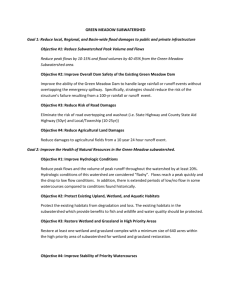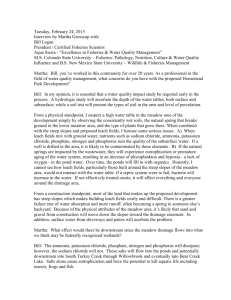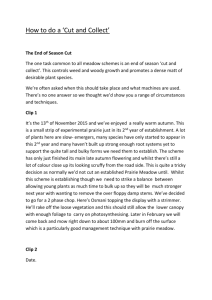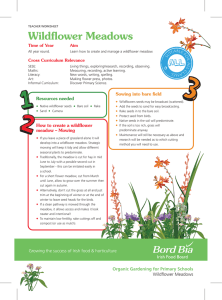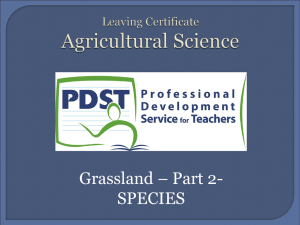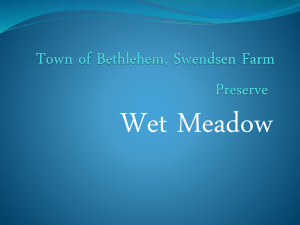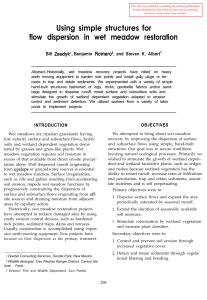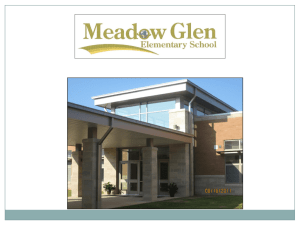LOWER ALLITHWAITE PARISH COUNCIL ALLITHWAITE
advertisement
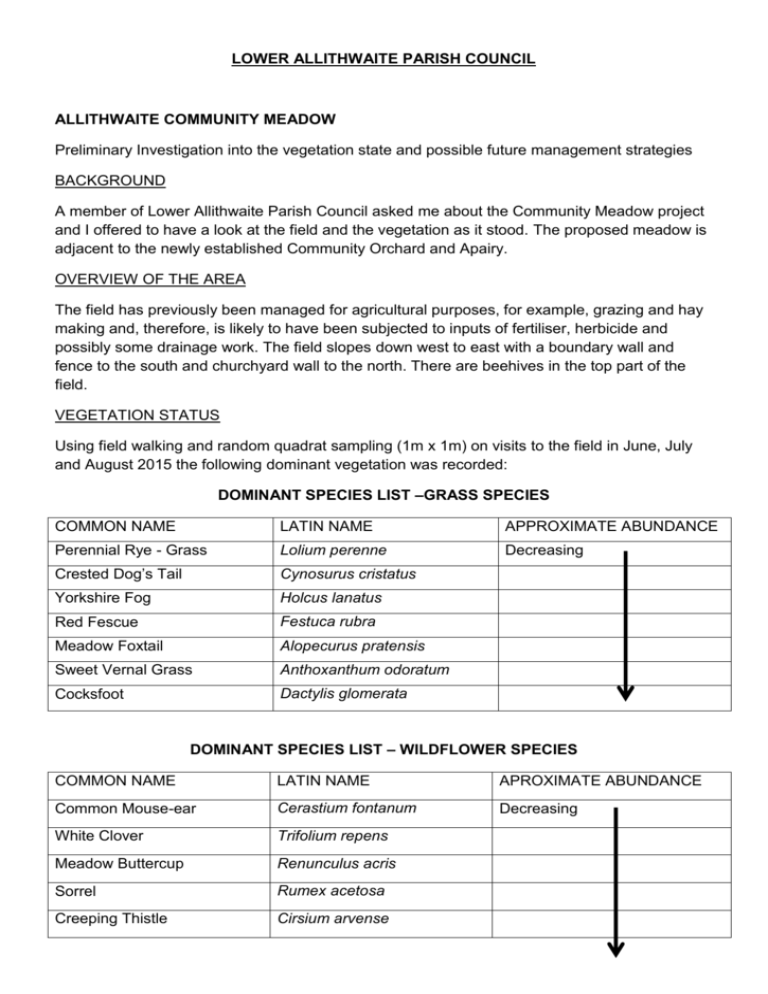
LOWER ALLITHWAITE PARISH COUNCIL ALLITHWAITE COMMUNITY MEADOW Preliminary Investigation into the vegetation state and possible future management strategies BACKGROUND A member of Lower Allithwaite Parish Council asked me about the Community Meadow project and I offered to have a look at the field and the vegetation as it stood. The proposed meadow is adjacent to the newly established Community Orchard and Apairy. OVERVIEW OF THE AREA The field has previously been managed for agricultural purposes, for example, grazing and hay making and, therefore, is likely to have been subjected to inputs of fertiliser, herbicide and possibly some drainage work. The field slopes down west to east with a boundary wall and fence to the south and churchyard wall to the north. There are beehives in the top part of the field. VEGETATION STATUS Using field walking and random quadrat sampling (1m x 1m) on visits to the field in June, July and August 2015 the following dominant vegetation was recorded: DOMINANT SPECIES LIST –GRASS SPECIES COMMON NAME LATIN NAME APPROXIMATE ABUNDANCE Perennial Rye - Grass Lolium perenne Decreasing Crested Dog’s Tail Cynosurus cristatus Yorkshire Fog Holcus lanatus Red Fescue Festuca rubra Meadow Foxtail Alopecurus pratensis Sweet Vernal Grass Anthoxanthum odoratum Cocksfoot Dactylis glomerata DOMINANT SPECIES LIST – WILDFLOWER SPECIES COMMON NAME LATIN NAME APROXIMATE ABUNDANCE Common Mouse-ear Cerastium fontanum Decreasing White Clover Trifolium repens Meadow Buttercup Renunculus acris Sorrel Rumex acetosa Creeping Thistle Cirsium arvense Yarrow Achillea millefolium The dominant two grass species appear to be Perennial Rye Grass and Crested Dog’s Tail and the dominant two wildflower species appear to be Common Mouse-ear and White Clover. The overall cover of the meadow is approximately in the ratio of 95:5 grasses to wildflowers. No rare or scarce grasses or wildflowers were found. The presence of these species and their abundance indicate that the area is typical of Improved Grassland according to definitions set out by Natural England. The vegetation community fits well into the NVC (National Vegetation Classification) of MG6 (Mesotrophic Grassland community) which is associated with well-drained permanent pastures and meadows. MG6 is Lolium perenne – Cynosurus cristatus grassland. POSSIBLE FUTURE HABITAT SURVEY AND MONITORING A more comprehensive investigation using, for example, Phase 1 grassland survey or Countryside Survey methodologies may be useful. This could be used to develop a management plan and to measure future change. However this would need more detailed data acquisition and subsequent analyses. POSSIBLE FUTURE MANAGEMENT In the long term the area will tend to revert to scrub if unmanaged. Some type of annual management will be required to try and improve the quality of the meadow. This year’s plan to manage the area by cutting the vegetation in mid-August and removing it fits in with recommendations by various conservation bodies. These bodies say that it is possible to manage an area of grassland to take it to a more biodiverse and species rich state using techniques including specific weed eradication, re-seeding, grazing abandonment etc. The speed of change and the ecological succession will be dependent on a number of factors, for example, source pools of potential colonizing species, soil nutrient status, soil pH and vegetation structure. The established meadow could provide enhanced wildlife benefits to different degrees depending on what management regime is adopted, for example: 1. 2. 3. 4. Leaving small uncut areas for cover Targeted weeding to give bare areas beneficial for insects Sowing local grass/wildflower seed mixtures Weed pulling (hand roguing) to limit the ability of competitive species to achieve dominance The meadow is already a valuable amenity for the community of Allithwaite but could be further enhanced to provide a more biodiverse habitat. Martin J Rossall Dip.H.E (Lancaster), Uni.Cert in Biological Recording (Birmingham). Field Ecologist (Retd.) Natural Environment Research Council. REFERENCES AND FURTHER READING Rodwell, J.S. (1992) British Plant Communities Volume 3 – Grasslands and montane communities JNCC Lowland Grassland Management Handbook 2nd edition


